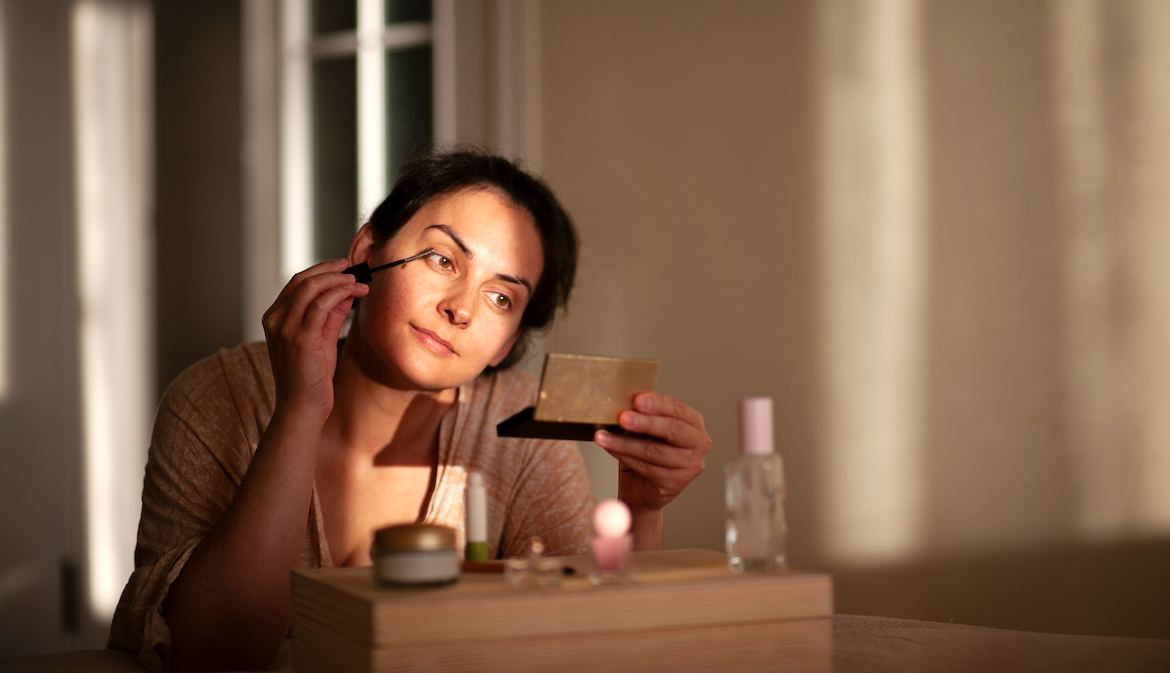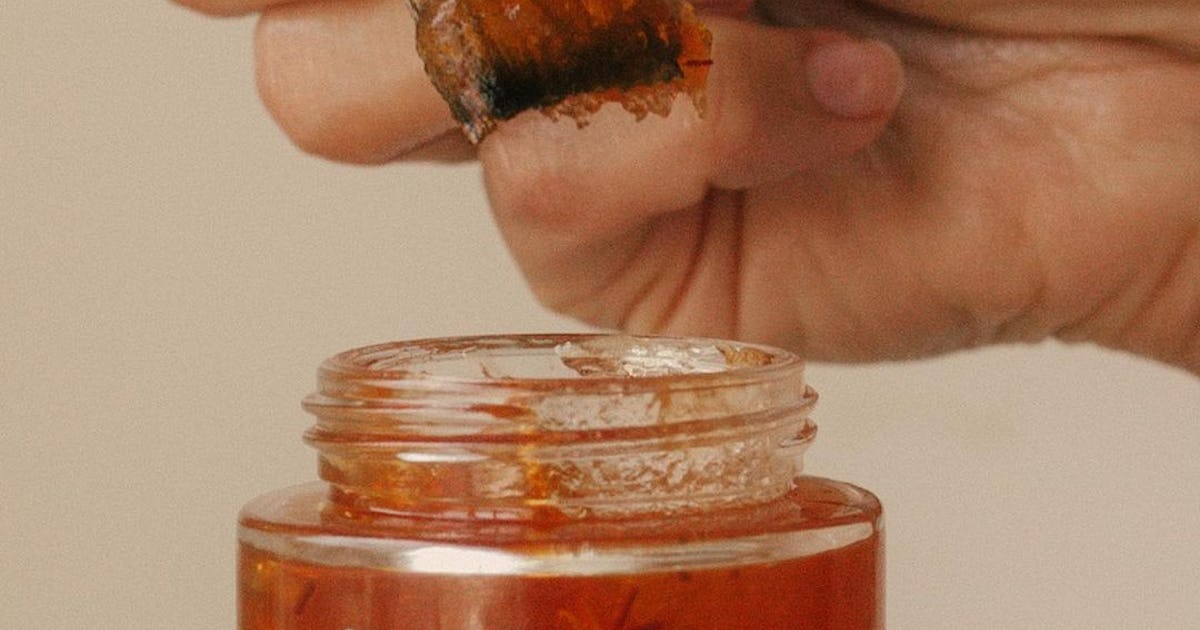Composed by Jasmin Hernandez, CNN
This feature is component of CNN Style’s new collection
Hyphenated, which explores the sophisticated difficulty of identity amid minorities in the United States.
Raelis Vasquez, a New York and New Jersey-based artist, performs from a bank of his memories and emotions to produce tender and sincere paintings of Afro Dominican everyday living. Generally showcasing his kin and pals, the massive-scale oil and acrylic performs are forged in heat and welcoming colours. In one particular portray, a brown-skinned girl in a tubi, a tubular hairstyle crafted by Dominican women of all ages to preserve our salon blow-outs, eats her breakfast. In other is effective, a Black girl bottle-feeds her baby whilst sitting down in a dazzling blue rocker, and a younger Black couple await their destiny as they document their nuptials on their wedding ceremony working day.
Touching on race, class and immigration, Vasquez faucets into his to start with-hand ordeals and that of his subjects. The genesis of Vasquez’s items commence with photographs, which he normally takes himself of relatives customers in the US or back in the Dominican Republic, staging comfortable scenes with them that switch into additional profound times on the canvas.
“Noches en el Pueblo de Dios” (2020) 40″ x 60″, Oil, acrylic, and oil stick on canvas. Credit history: Courtesy Raelis Vasquez
Two of his performs are at present showcased at New York City’s El Museo del Barrio for “Estamos Bien — La Trienal 20/21” — the
museum’s initial and major survey of Latinx contemporary art, visitor-curated by esteemed Dominican American artist
Elia Alba. Vasquez is the youngest artist in the clearly show, and his paintings present the pleasure of energetic gatherings in the campo (that means rural regions or the countryside in Spanish-speaking countries and inside of the Latinx diaspora). “Noches en el Pueblo de Dios,” from 2020 (“Evenings in Pueblo de Dios”), pays tribute to the small city he grew up in in the Dominican Republic, in the northwestern city of Mao, known for its quite a few rivers and vivid crimson sunsets. In the painting, people of different pores and skin tones gather for discussions and cervezas.
In excess of the telephone, Vasquez speaks thoughtfully about a current excursion again to the island, his second visit so significantly in 2021. He recounts shelling out time with his brother and extended family members in Mao and street tripping across the state, to coastal metropolitan areas Santo Domingo and Puerto Plata as properly as Santiago.
“Mercado en Dajabon” (2021) 72″ x 72″ Oil, acrylic, and oil pastels on canvas. Credit: Courtesy Raelis Vasquez
“The Dominican Republic has so significantly splendor and so lots of lovely items to go and see and examine,” he reported. “A person of the main items, (specially) me being an artist, is becoming in the capital in Santo Domingo.”
For Vasquez, who immigrated with his household to New Jersey at seven yrs old in 2002, coming house, reconnecting with relatives and being nourished by Dominican lifestyle is the innovative sustenance that feeds his powerful and personal paintings. His most recent journey, he stated, will be where he attracts inspiration for his subsequent is effective.
“I am usually doing work, normally capturing, I’m constantly crafting, and I am accomplishing sketches, reading,” he said of his time there. “I just take time away from the working day-to-working day studio do the job and do that other kind of get the job done though I am out there.”
A broader range of representation
Even though there is eventually an increased concentrate on
present-day Latinx art (individual from Latin American art), the wrestle proceeds to assure Black, Indigenous and Asian illustration within just Latine communities.
In new several years reveals like “
Our America: The Latino Presence in American Art,” and the extensive-reaching “
Pacific Conventional Time: LA/LA“, which highlighted a myriad of Latinx dialogues in art (and highlighted different Latin American kinds as effectively), have served as incredibly wide, nevertheless valid, making blocks shaping US Latinx art. Extra certain reveals like
“
Pacha, Llaqta, Wasichay: Indigenous Space, Fashionable Architecture, New Art,” which
investigated Latinx artists and their romance to Indigenous architectural and spatial frameworks in the Americas, and “
Afro Syncretic,” which showcased Blackness within just the Latinx diaspora, analyzing its ties to thoughts which includes splendor requirements, songs, food stuff and faith.
“Del Otro Lado de Dajabon” (2020) 30″ x 48″ oil, acrylic, and oil stick on canvas. Credit score: Courtesy Raelis Vasquez
Vasquez and other increasing Black Latine modern artists these kinds of as Yelaine Rodriguez (who curated “Afro Syncretic”) and Joiri Minaya, continue constructing deeply nuanced Black Latinx narratives that artists like Fabiola Jean-Louis and Firelei Báez have crafted for far more than a decade. These artists disrupt limited and monolithic concepts on Latinx id (which racially facilities white Latinx and mestizxs as the default), and examine the multi-dimensionality of Blackness. Vasquez does so merely by spotlighting his Black Dominican cherished types in daily scenes created monumental in scale with real relatability.
“I would say that by the sheer illustration of the society that I occur from, I give this id of Latinx a broader array of perceptions,” he mentioned. “In the US individuals normally imagine of Latinx folks, or folks from Latin America, in a single way.” But, as Vasquez points out, the variety of skin tones inside of his possess loved ones worries that concept. “The way that my family seems, side-by-side, you would feel you might be conversing about the entire Latin The us just like, phenotypically,” he reported. “I assume it is essential to have much more voices from these wide groups, so that we can truly see the nuances and definitely value the dissimilarities and similarities, for the reason that we all have our similarities as properly.”
Rising as an artist
For Vasquez, art has very long specified him a perception of independence and refuge in processing and praising his Afro Dominican identification. He turned to drawing as a little one when he was changing culturally in the US, and by large school, his talent had blossomed.
“I consider it was a consequence of the immigration method,” he mentioned. “It was drawing, that issue that I could regulate in this environment (the place) I felt actually out of area, and in an ecosystem I couldn’t command.”
Just after attending local community school in New Jersey, he enrolled at College of the Art Institute of Chicago (SAIC), which, despite the fact that prestigious, isn’t regarded for its diversity.
“Birthdays like Ours” (2021) 36″ x 36″ oil, acrylic, and oil adhere on canvas. Credit history: Courtesy Raelis Vasquez
Vasquez utilized the time there to reflect on his perception of self, which turned basic to his growth as an artist building Black Latinx narratives.
“It authorized me area to consider about what I’ve been by means of, who I am, (and) wherever I occur from,” he said. “I assume it took staying out of this DR, New Jersey, East Coastline, New York, very Caribbean, type of culture, mainly because the moment you might be in it, you assume every thing is standard, right up until you are eliminated from it.” In Chicago, he additional, “that was the initially time I commenced pondering about the actuality that we immigrated.”
Now a Columbia College MFA college student, Vasquez’s occupation is thriving regardless of the uncertainty and annoyance of the pandemic. Very last September, Vasquez and fellow Afro Dominican American painter Tiffany Alfonseca collaborated on a two-individual present, “
Como Nosotros Somos,” (“How We Are”) in Los Angeles, bringing together their figurative and vivid ways to the multi-layered activities of Black Latinx identities. This previous spring, Vasquez was included in “
Shattered Glass,” a blockbuster group exhibit at Jeffrey Deitch in Los Angeles, showcasing Black and POC artists structured by two younger Black curators, the gallery’s director Melahn Frierson and AJ Girard. The present bundled Vasquez’s new painting “Mercado en Dajabón,” which respectfully reveals the each day survival of Haitian immigrants in the border current market city of Dajabón in the Dominican Republic.
“La Mesa Nuestra”(2021) 60″ x 84” Oil, acrylic, and oil pastels on canvas. Credit rating: Courtesy Raelis Vasquez
Vasquez’s modern international debut solo show with De Buck Gallery in France, “
Belleza Común (Beauté Commune),” showcased 6 new operates manufactured in late 2020, combining oil, acrylic, oil stick and sand. The portraits are reverential, pensive and susceptible. In “Picnic Day,” a loved ones of four delight in rest, leisure, food stuff and sunshine, even though in “El Sastre,” a tailor normally takes a contemplative interlude. Symbolically, these topics characterize the Dominican individuals who appear to Washington Heights and the Bronx in New York Paterson, New Jersey Boston, Massachusetts and Providence, Rhode Island making these metropolitan areas operate like clockwork, though breaking their backs and laying down new roots.
Future thirty day period, Vasquez has a second worldwide solo present in Frankfurt with
Sakhile & Me, titled “As We Had been”, and this time he is sourcing previous spouse and children pics as the basis for the works.
“With this (impending Frankfurt show), I had to get rid of that control because I’m looking at outdated family members photographs that were being not taken by me,” he discussed. “I’m deciding on (the photos) and even now undertaking my process, inserting myself in a way to revitalize the second, but I see it as a difference.”
Leading impression: “Buen Provecho” (2020) 40″ x 60″ oil, acrylic, and oil adhere on canvas.























/https://specials-images.forbesimg.com/imageserve/604ad3acf728cc29468fec2e/0x0.jpg?cropX1=0&cropX2=846&cropY1=47&cropY2=523)
![See Inside the Amazing Homes of State Music’s Queens [Pics]](https://townsquare.media/site/204/files/2020/08/tim-mcgraw-faith-hill-mansion-california-pictures.jpg?w=1200&h=0&zc=1&s=0&a=t&q=89)











